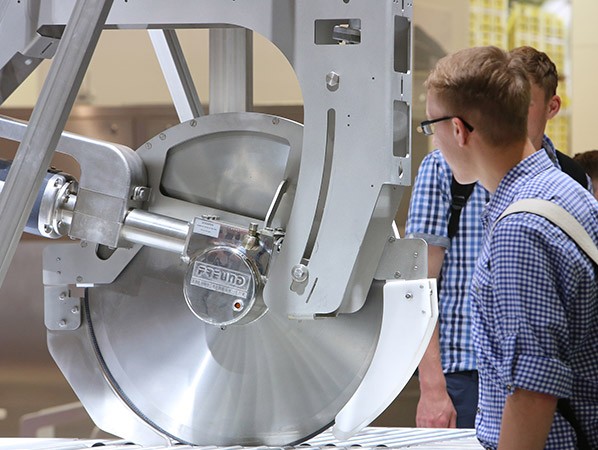
The IFFA is the world's most important driver for the international meat industry. From 4 to 9 May 2019, future-oriented solutions for slaughtering, processing and packaging meat will be central. The mechanical engineering association VDMA is the ideal partner of the IFFA and supports the organiser Messe Frankfurt in the technical field on all market-relevant issues.
In 2017, international demand for meat processing machines rose slightly above the high level of the previous year to almost 1.9 billion euros. Within 10 years, the machine trade within this segment has therefore increased by 30 percent. Hardly any other subsector of the food machinery industry has experienced an equally dynamic development.
In addition, there are packaging machines, automation solutions, transport technology and other components used in the meat industry, but assigned to other statistical areas. The VDMA estimates that the value of these product groups in relation to the year 2017 is at least 1 billion euros.
The total investments of the international meat industry will be much higher, because the total demand also includes the machines purchased within the local market in question.
The success of German meat processing machine manufacturers is closely linked to the tradition of sausage production. Today, German companies are world leaders in the production of meat processing machines with a share of 29 percent (2017) of the world trade volume.
The manufacturers from the Netherlands supply 22 percent of the world trade volume and Italy is the third most important supplier country with a share of 9 percent. Other exporters include the US with 7 percent, China with 6 percent, Denmark with 5 percent and Poland, France, Austria and Spain with shares of 3 percent each.
In 2017, 46 percent of the meat processing machines exported worldwide were delivered to European countries, of which 34 percent to the European Union. The second most important sales region was Asia, with an 18 percent share. To North America, 16 percent of the world trade volume was delivered. Latin America accounted for 10 percent, the Middle East region 4 percent of world exports. Africa and Australia each accounted for 3 percent of total deliveries.
As in most previous years, the US led the list of the top 20 markets in 2017. The list of countries includes Russia, France, Germany, Thailand, Spain, Great Britain, China, Poland, the Netherlands, Mexico, the Republic of Korea, Canada, Australia, Belgium, Japan, Brazil, Italy, Switzerland and Finland.
The level of investment in the strong industrialised countries is high, but the more dynamic demand impulses come from countries outside Europe. The importance of the individual sales regions has shifted in recent years in favour of Asia and Latin America. The VDMA expects this shift to continue gradually, as the importance of the individual markets in Asia, Latin America and also in Africa will increase further in the future.
The outlook for the meat industry's suppliers is viewed positively by the trade association: the world population is growing, food spending is rising and the emerging economies in particular are catching up in terms of consumption.
This estimate is confirmed by figures from the British market research bureau Euromonitor International: the experts predict, for example, for the product category "Fresh Meat" a growth of the international trade volume of 10 percent until 2022. Further growth of 10 percent is expected for the largest market region Asia. For Latin America a growth of 12 percent is predicted and in the Middle East/Africa region consumption - assuming a still low level - would increase by 18 percent according to the experts. Worldwide sales volume is estimated at 260 million tonnes for 2022. Increasing consumption will result in investments in building and expanding production capacities. In most countries, the need for technologies cannot be covered by the local supply and the machinery and equipment must therefore be purchased on the international market.
In the developed markets of Western Europe, due to the already high level of meat consumption, quantitative growth will be much slower and will also partly stagnate. At the same time, costs for meat and meat products are rising. This means that these markets are characterised by qualitative growth.
Health trends, the integration of meatless alternatives into the diet, the desire for new taste experiences and versatile packaging shapes and sizes have an important influence on consumer behaviour. Seasonal products and specialties are therefore becoming more important. Product life cycles are generally becoming shorter and shorter. The companies within the meat industry have to respond to this. The main focus of investment is therefore on solutions for process optimisation, increased profitability and overall system efficiency. Digital solutions are becoming increasingly important here.
At the IFFA in Frankfurt, the world's largest platform with the largest number of experts, machine manufacturers will present their solutions for the versatile requirements of the meat industry, for all sizes and groups from 4 to 9 May 2019. In line with the international development of the demand for investment goods, the mechanical engineering industry expects a high internationality and further growth in visitor numbers for the IFFA 2019.
Source: © VDMA